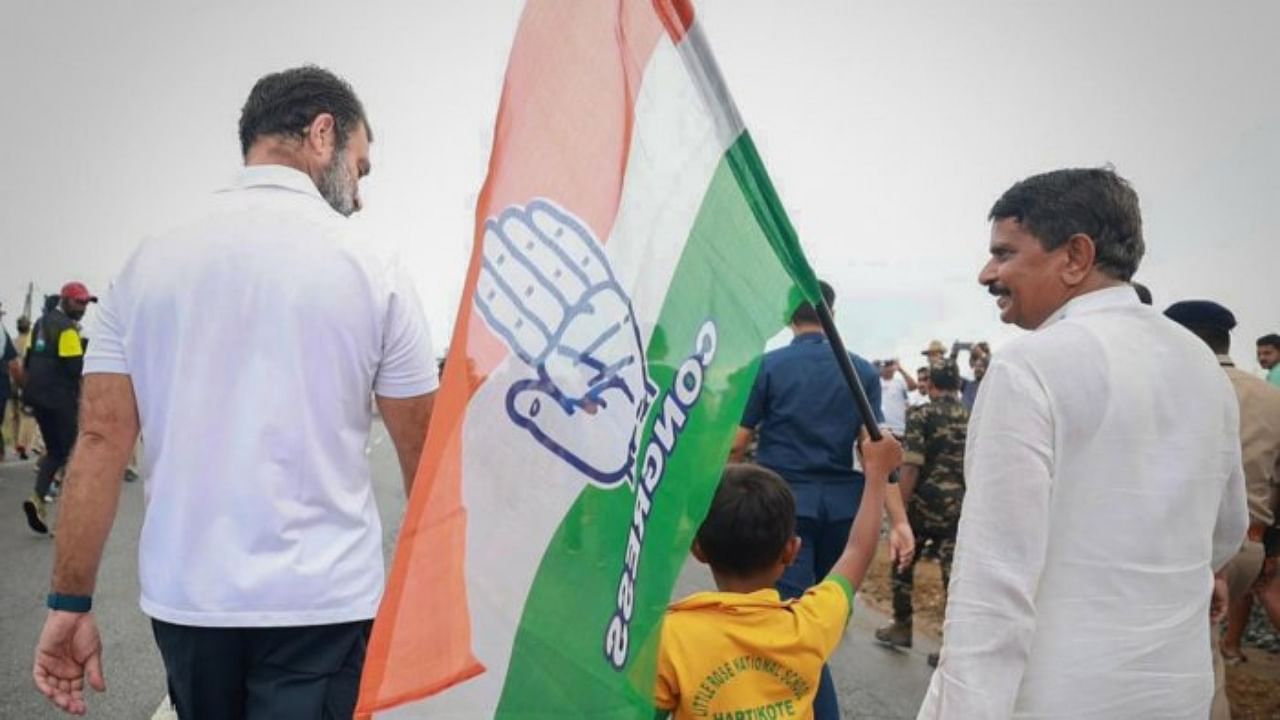
Congress’ Bharat Jodo Yatra has certainly created a political buzz. There is no shortage of journeys, some of which are truly epical, in Indian politics. A more than three-decades-old ‘Rath Yatra’ was instrumental in the BJP’s emergence as a strong political force in the country, we know.
Although yatras have become an integral part of the Indian political landscape ever since Gandhi’s Dandi March in 1930, their philosophy is deeply inscribed within the social values of this diverse country. In Richard Attenborough’s movie depiction, when Gandhiji said India was an ‘alien’ country to him, Gopal Krishna Gokhale would advise him: “Go and find India. Not what you see here, but the real India. You’ll see what needs to be said. What we need to hear.” And Gandhiji’s yatra across the country in a third-class rail coach would begin.
Former BJP president Murli Manohar Joshi, whose 1991 ‘Ekta Yatra’ possibly supplemented Advani’s ‘Rath Yatra’ in BJP’s subsequent electoral triumphs, used words from a hymn of the Aitareya Upanishad to give a historical, spiritual, and philosophical perspective: “Our scriptures talk about ‘charaiveti, charaiveti’…life’s journey is like a yatra.”
In Indian politics, padyatras “continue to be a politically relevant strategy used not only for mobilisation but also for partisan gains that capitalise on its imagery,” as perceived by Radhika Kumar in a 2017 paper published in Studies in Indian Politics.
It was N T Rama Rao who perhaps pioneered the show business of Indian politics, and could revive this indigenous yatra culture as an effective political instrument in independent India through his ‘Chaitanya Ratham’ rally in 1982 that helped him sweep the 1983 assembly elections. And in recent Andhra Pradesh, Y S Jagan Mohan Reddy undertook ‘Praja Sankalpa Yatra’ covering 3,648 km by foot in 341 days prior to his party’s sweeping success in 2019. In retrospective analysis, a political success following a yatra may be seen as a success of the yatra.
In his autobiography, My Country My Life (2008), Advani writes: “It was the Rath Yatra that made me realise that, if I were to communicate the message of nationalism through the religious idiom, I would be able to transmit it more effectively and to a wider audience.” It’s, certainly, a history of overuses of padyatras, Rath Yatras, or cycle yatras in contemporary India, all eventually converging to ‘Vote Yatra’. Yes, politicians, in general, seem to love to be a part of the yatra bandwagon.
Some political yatras may yield a long-term dividend. In 1983, Chandra Shekhar’s padyatra from Kanyakumari to Delhi, covering 4,000-odd kilometres in four months, earned him monikers like the ‘Marathon man’. Indira Gandhi’s assassination perhaps diluted the impact of this padyatra in the 1984 Lok Sabha elections, but this national limelight might have been one of the factors that propelled him to the prime minister’s kursi in 1990.
Interestingly, in the run-up to the 2022 UP Assembly polls, various political parties have campaigned through yatras – BJP’s ‘Jan Ashirwad Yatra’, SP’s ‘Cycle Yatra’ and ‘Kisan Naujawan Patel Yatra’, Congress’ ‘Pratigya Yatra,’ and ‘Dalit Swabhiman Yatra’, for example.
Understandably, not all of them can work. With too many political yatras nowadays, has yatra lost its teeth, as an instrument to connect people? Also, it should be remembered that the ‘yatri’ may be no less important than the yatra itself. Don’t forget that only Yudhishthira could reach heaven while the other Pandavas and Draupadi failed!
And the ‘yatri’ is also not enough – it’s about grabbing opportune moments that are brewing in society. Don’t forget that the man whose 1990 ‘Rath Yatra’ changed the Indian political scenario forever, also performed ‘Bharat Uday Yatra’ ahead of the 2004 general elections to highlight the achievements of Vajpayee’s 6-year tenure but failed to infuse the 1990 spirit.
Thus, possibly a yatra can become successful only if the party or the leader has something solid to offer which, in turn, the electorates are also ready to accept.
Just wondering whether such yatras can still generate substantial political impact as they did earlier in this digital era with an immensely powerful social media; India currently has nearly 47 crore users. Political parties, however, still bet on such yatras and undermine others’ yatras as well. A crucial acknowledgment of the limitations of social media? A personal touch has no substitute, for sure.
Subha Yatra to all the yatris, in any case!
(The writer is professor of statistics, Indian Statistical Institute, Kolkata)